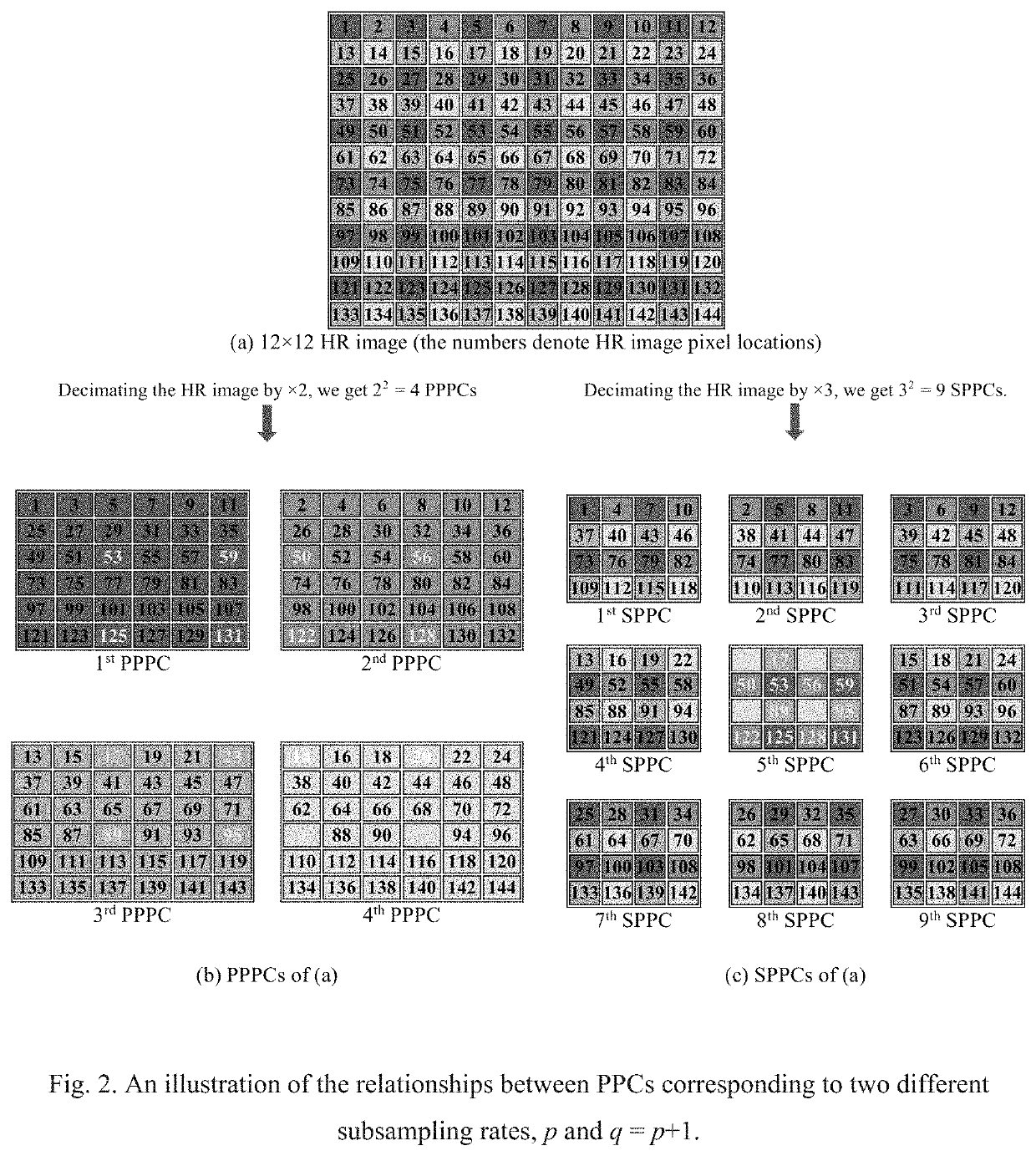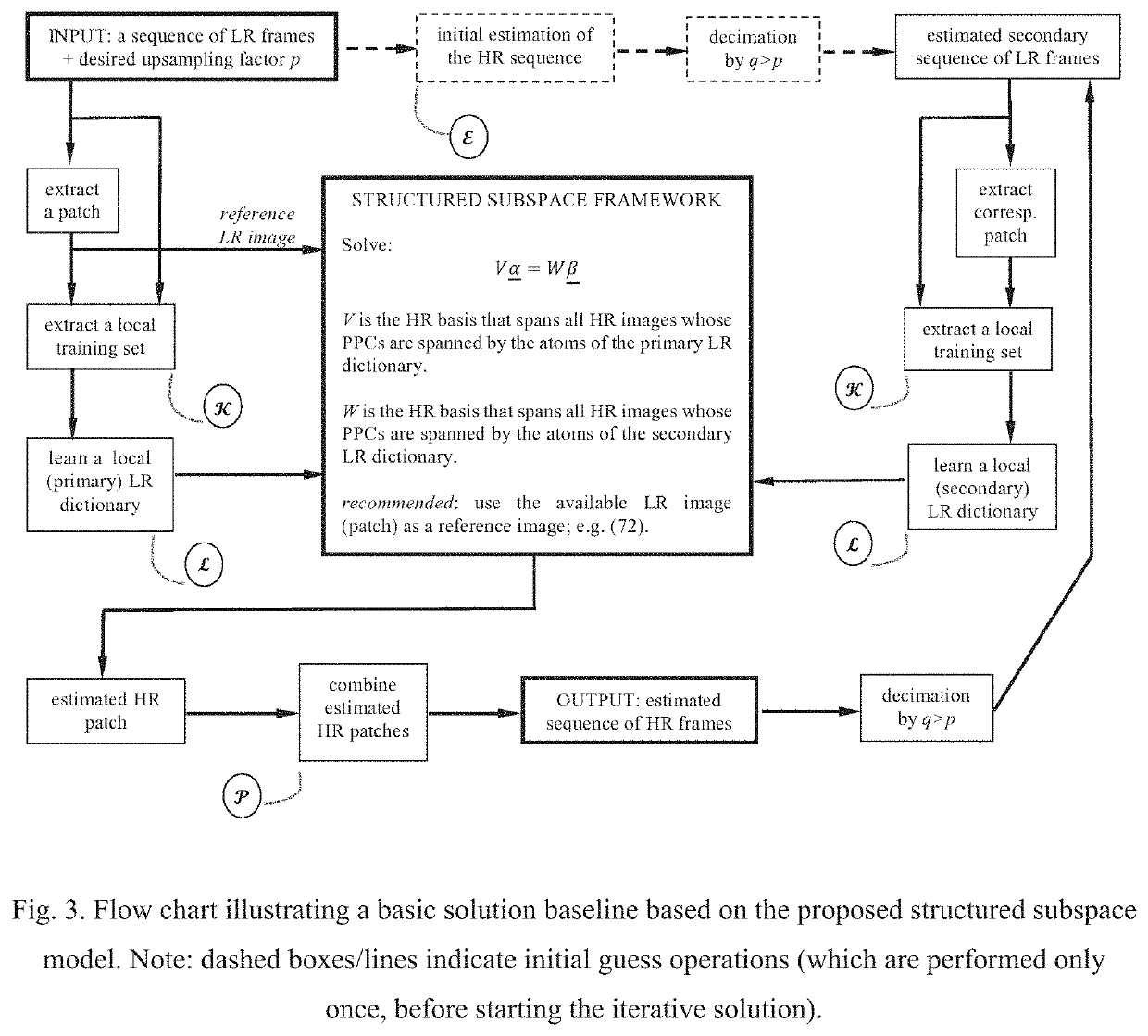Image upsampling by learning pairs of low-resolution dictionaries using a structured subspace model
a subspace model and learning pair technology, applied in the field of image upsampling by learning pairs of low-resolution dictionaries using a structured subspace model, can solve the problems of severely limited pixel density by the physics of imaging technology, and achieve the effects of high dynamic range, limited pixel density, and high speed
- Summary
- Abstract
- Description
- Claims
- Application Information
AI Technical Summary
Benefits of technology
Problems solved by technology
Method used
Image
Examples
Embodiment Construction
[0044]Estimating HR images based on LR dictionaries is a notion that is quite alien to conventional wisdom. Indeed, image upsampling would be an intrinsically simple problem if all it takes to solve it is to “learn” LR dictionaries from a LR sequence, but could it really be that simple? The answer by the authors of [1], [2] (above) was ‘no’, unless the issue of partial measurements for the PPCs is resolved via an imaging hardware modification.
[0045]Adding the structured subspace perspective, however, reveals that no imaging hardware modification is necessary, and that the problem can indeed be solved solely by learning LR dictionaries. Before we proceed with solution details, we would like first to list a few assumptions, acronyms, and notational conventions that will be used in describing the details.[0046]1—Without loss of generality, we assume that the HR image, we seek to estimate, is square, and with a dimension that is an integer multiple of pq, where p is the primary decimati...
PUM
 Login to view more
Login to view more Abstract
Description
Claims
Application Information
 Login to view more
Login to view more - R&D Engineer
- R&D Manager
- IP Professional
- Industry Leading Data Capabilities
- Powerful AI technology
- Patent DNA Extraction
Browse by: Latest US Patents, China's latest patents, Technical Efficacy Thesaurus, Application Domain, Technology Topic.
© 2024 PatSnap. All rights reserved.Legal|Privacy policy|Modern Slavery Act Transparency Statement|Sitemap



